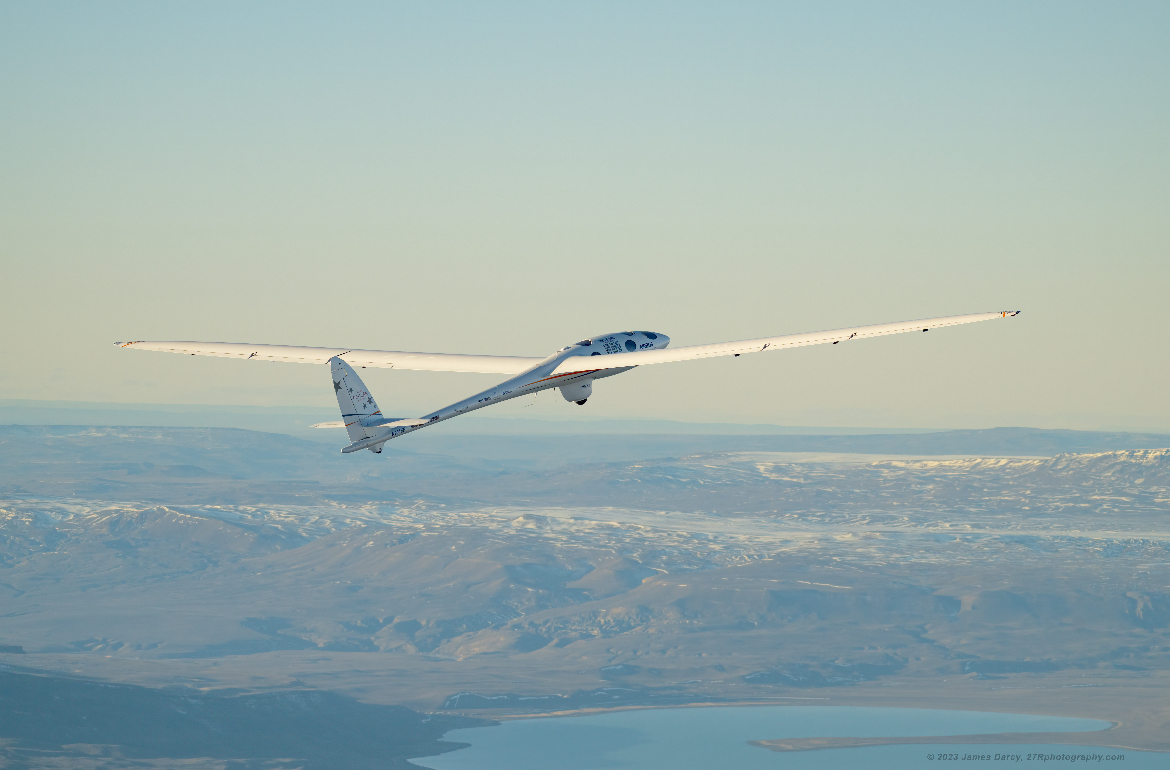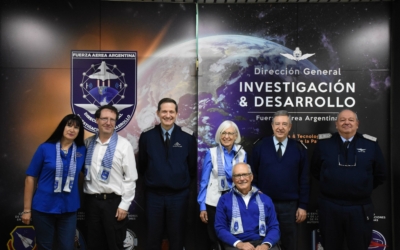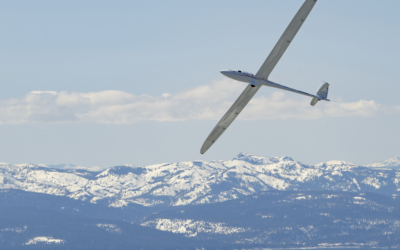MINDEN, Nevada, Dec. 21, 2023 – Airbus Perlan Mission II, the world’s first initiative to soar a pressurized, engineless glider into the highest areas of the stratosphere, is celebrating the close of its fifth flight testing season following eight years of history-making accomplishments in aerospace exploration, sustainability and innovation.
- Watch video about this story here
An international team of aerospace experts led the Perlan 2 experimental sailplane to four world record-setting altitudes, including a top point 76,124 feet on Sept. 2, 2018, above the Andes Mountains near El Calafate, Argentina. This achievement established a new world aviation altitude record for the highest subsonic flight in a winged, crewed aircraft. By doing so in a zero-emission aircraft, the team also demonstrated the remarkable potential of decarbonized aviation.
Operated by Nevada nonprofit The Perlan Project, the two-seater Perlan 2 is flown by chief pilot Jim Payne together with pilots Tim Gardner, Miguel Itermendi, and Morgan Sandercock, who is also the program’s chief engineer.
“Our other sponsors enabled our international team to continue making aviation history, and we are truly grateful for their faith in our ability to achieve the seemingly impossible together,” said Ed Warnock, CEO of The Perlan Project. “Together, we have pushed the boundaries of aerospace engineering to new limits and opened up new ideas about the untapped potential of zero-emission aircraft. We hope this message inspires the next generation to help us innovate and transform the future of flight.”
The Perlan 2 glider is a uniquely well-suited atmospheric research platform, given its lack of emissions. Onboard instrumentation and experiments in its science bay collect data on stratospheric weather, radiation, air quality and other information that could help improve current climate change models.
The Perlan program and its partners have also conducted research on every flight into conditions found at extreme altitudes that may impact aviation efficiency, flight safety and our planet’s weather. The wide range of scientific inquiries include the use of:
- Artificial intelligence to analyze flight paths through complex stratospheric wave systems.
- Infrasonic microphones to detect and avoid severe turbulence.
- Instruments to detect radiation coming in from space that could interfere with airborne electronics.
- Radio occultation instruments that use the strength of signals from satellites to measure atmospheric humidity.
This season, over a dozen experiments built by students participating in the Teachers in Space aerospace STEM program across the U.S. flew aboard the Perlan 2 and the initiative’s high-altitude Grob Egrett tow plane and high-altitude research aircraft, operated by AV Experts LLC, which tows the Perlan 2 off the ground to begin its flights.
This season’s highest flights at over 60,000 feet, which is about twice the altitude of typical commercial flights, also set a record for the highest aircraft Wi-Fi hotspot in the world. The Thales FlytLINK™ Connectivity Demonstrator was installed on both the Perlan 2 glider and the Grob Egrett. Video cameras aboard both aircraft provided images for Perlan’s Virtual Cockpit livestream, including epic vistas from the stratosphere. The system was also used to share the glider’s location and orientation, exchange AI-optimized flight planning, and provide up-to-date weather information to pilots.
The Airbus Perlan Mission II all-volunteer team is made up of some of the aviation industry’s most celebrated test pilots, as well as world-renowned climate scientists, engineers and experts from a variety of fields. Airbus began its title sponsorship of The Perlan Project in 2014, facilitating the completion of Perlan 2’s construction.
The Perlan Project is also supporting Airbus on other aerospace research initiatives, including Airbus UpNext’s Blue Condor project, which is assessing the chemical composition of contrails from hydrogen-fueled engines.
While future missions are in planning and yet to be determined, The Perlan Project is continuing its work in providing aerospace and climate organizations with an effective, zero-emission platform for high-altitude research.
A Press Kit with images, infographic, fact sheet, and videos is available at: http://bit.ly/perlanpress.
About Airbus Perlan Mission II
Airbus Perlan Mission II is an initiative to fly an engineless glider to the edge of space, higher than any other winged aircraft has operated in manned, level flight, to open up a world of discoveries related to high-altitude flight, weather and climate change. This historic endeavor is the culmination of decades of research and engineering innovation, and the work of a tireless international team of aviators and scientists who volunteer their time and expertise for the non-profit The Perlan Project. The initiative, based in Minden, Nevada, is supported by Airbus and a group of other sponsors that includes Dennis Tito, Weather Extreme Ltd., Raytheon (United Technologies), BRS Aerospace and Thales.
Media Contact
Kristina Messner
The Perlan Project
+1 703 716 3181
kristina@messnermediagroup.com





